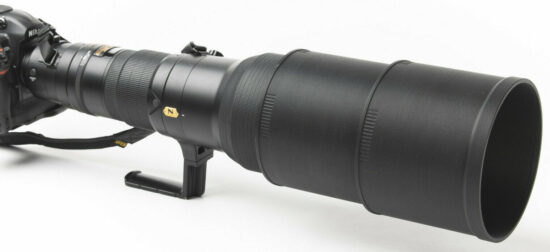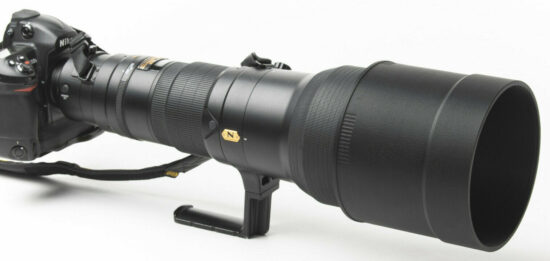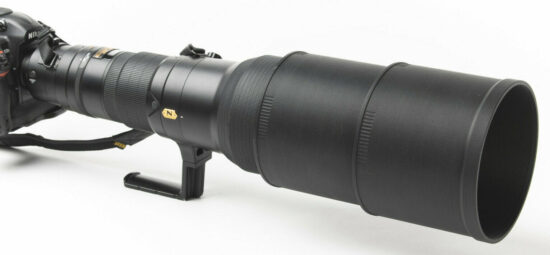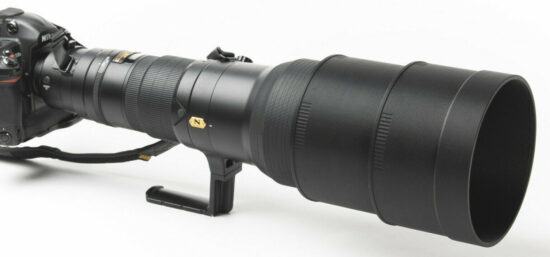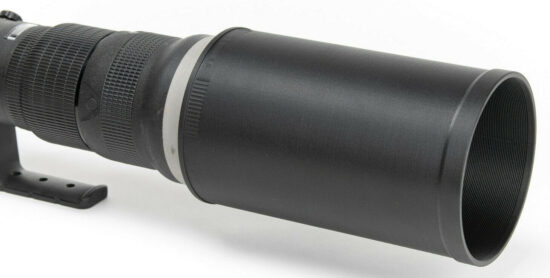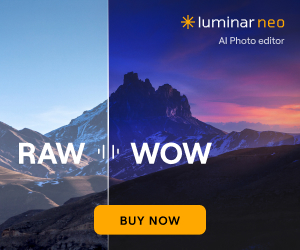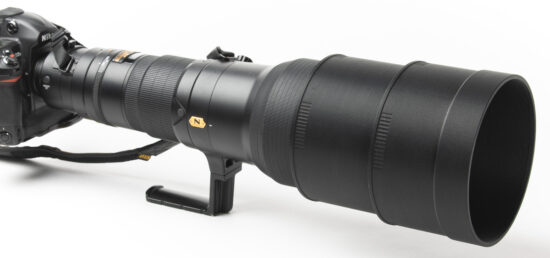
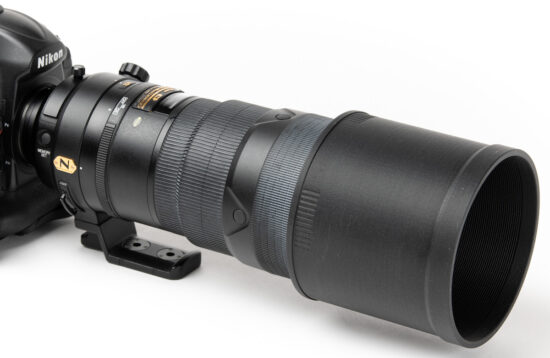
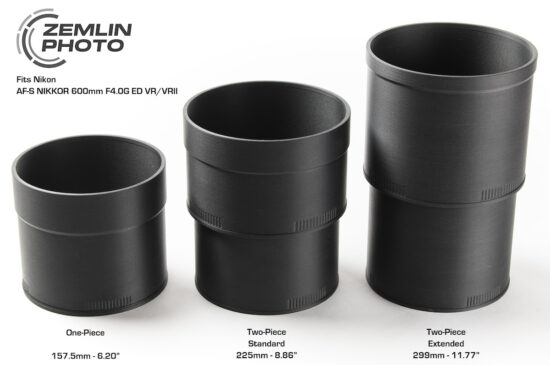
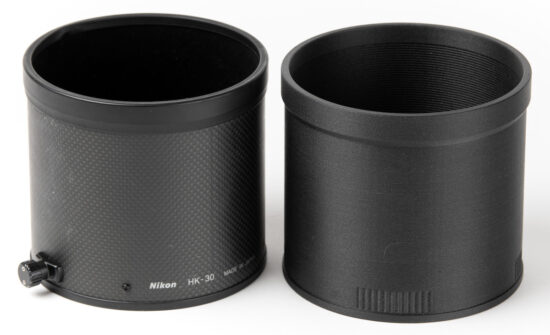
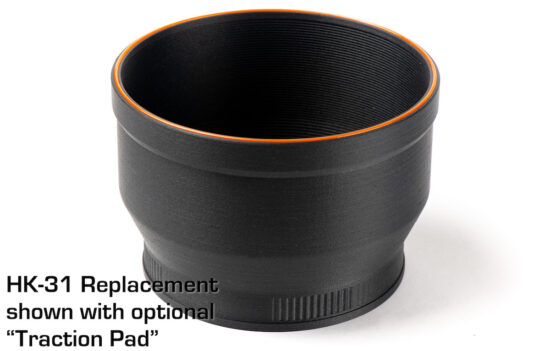
A reader contacted me about his own lens hoods specifically designed for Nikon super-telephoto lenses. The different versions can be purchased directly on eBay. See also this related post at the Nikon Rumors Forum.
- Karl Zemlin from Carmel, Indiana (a suburb of Indianapolis), age 58.
- Mechanical engineer – University of Illinois Urbana BSME 1986.
- Worked as a machinist and metal fabricator during school.
- The bulk of my professional career has been designing automation equipment.
- Started doing design work in 3D in the late ‘80s.
- Bought my first 3D printer in January of 2016
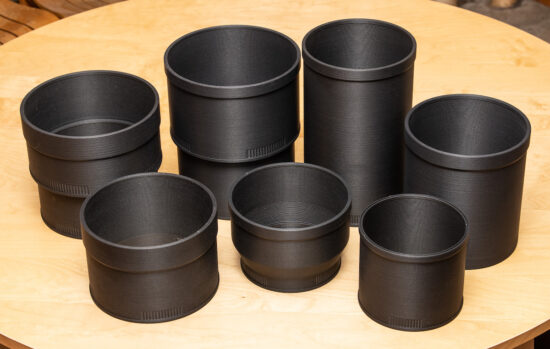
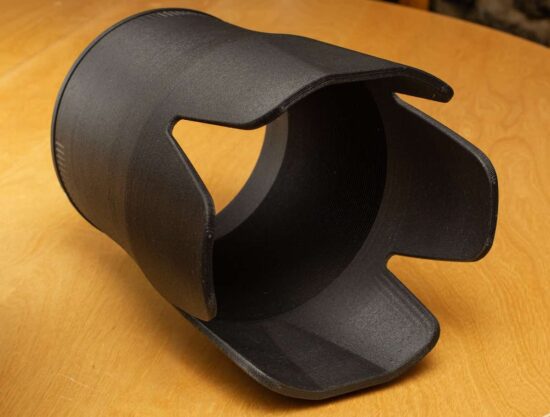
My dad was into photography. He was a professor at Illinois in Speech and Hearing Science and did a lot of research on cadavers. He did a lot of photography as part of his research, and also enjoyed photography outside work. He had a darkroom in his lab and I had access to that while I was in town.
I always kept a camera or two on hand but was not dedicated enough to build a darkroom in the house. I didn’t really do much with photography after graduating from college. As computers advanced through the years and image editing began to mature, it became clear that the digital darkroom would become a thing. I inherited my dad’s Nikon F4 and a few lenses when he died, so that kind of put me on the Nikon side of the fence.
When I first saw Nikon’s announcement for the D1, I knew that’s where I wanted to go. I started putting spare dollars into a box knowing that by the time I had enough to buy a camera, things would have moved way beyond the D1. It was a long and winding road, but finally, in 2007 I ended up buying a Nikon D80. I just wanted the control of an SLR, and a digital darkroom to play in. I had no aspirations of photographic competence beyond knowing that I’d be able to take a technically good photo.
The learning curve with digital photography is so different than with film though, and I grew with photography well beyond my expectations and decided to go part-time pro in 2008.
Some of my stuff: zemlinphoto.com | Facebook | Instagram | YouTube
In 2012 I started shooting for the Indianapolis Motor Speedway. They had the big primes that I could use and I learned that swinging a big lens was something I could do and learned to love. I also enjoy nature and wildlife photography, although I have enough irons in the fire I don’t have much time for that.
Eventually, I set my sights on owning a big prime. After a lot of talk with other photographers, experimenting with the lenses at the track, and considering my bucket list of a couple of wildlife expeditions I decided it had to be the Nikon 400 f/2.8 VR. It plays well with teleconverters, and I can get out to 800mm with good IQ and still be at f/5.6. I keep my business funds separate from the grocery money but didn’t have the side-gig cash flow to support that kind of expense. I eventually convinced my wife to let me buy the lens before I was too old to swing it around.
I live in Indianapolis, so Robert’s Camera is local and I know some of the folks there. I kept my eye on their used gear for a couple of years. I looked at a few lenses, and finally, late in 2018, the right lens came at the right time. That’s where this story begins.
I love the lens and use it more than I expected. After getting it dialed in on all my bodies (D3s, D500, D810 at the time – now D850), the results are stunning. Even with the 2x TC-20e III. I kind of like the look of the two-piece hood, but I didn’t get along with it very well.
There were at least 3 times that it fell off while I was walking around with the lens. Twice when I was in the woods and I was lucky enough to hear it hit the ground, and once at the Speedway where, with the probability of buttered toast landing butter-side down – it landed on pavement on the clamp knob. No significant damage, but it got my brain stewing on design ideas.
One of my biggest hurdles in producing a 3D printed hood was the material selection. The two key properties are high strength and good sliding between components without creating wear issues. I print with a lot of materials, but nothing I was using at the time was going to be good enough for a big lens hood.
Then, right before the Covid shut down I discovered fiberglass reinforced ABS plastic. It’s an expensive material and not easy to print, but it has the properties I was looking for. I also had parts in hand for a major upgrade on my 3D printers. I was off work for about 6 weeks as my employer was shut down, and after some home improvement work, I upgraded my printers – adding heat to the enclosure, replacing the motion control board with a more advanced controller, and making some mechanical improvements as well.
I felt I now had all the pieces. The material to do the job, a heated enclosure on the printer that would let me print ABS, and the control feature on the printer to deliver the part quality. Being out of work, I set to designing a bayonet-mount hood design for my 400mm. It took me a while to find the right combination of fits and features – a lot of 40mm tall test hoods to tweak the sizing, fit, and function. In early July I had a good V1.0 design and I shared this video on Facebook and with some of my local photo buddies.
I got immediate replies from some of them – “I hate the two-piece hood on my 400! I need one of those” (paraphrased) – and “The hood on my old 500 won’t stay on, can you make one for that lens?” “A Maryland basketball player bent the hood on my 200 f/2.” – and so it began.
The early adopters were super helpful, and their feedback help drives some design tweaks, and I also worked on the CAD models to make redesign to other lenses easier.
Initially, I didn’t think a two-piece hood comparable to the original Nikon two-piece hoods would work, but when I finally tested it out the results were great. On the factory hoods, the outer section is shorter than the inner because it has to clear the clamp-knob when reversed. With my design, there is no clamp knob so I make the outer section the same length as the inner. I keep the recessed area matching the factory hood so lens covers
design for the two-piece hood will still fit.
For the one-piece designs that replace two-piece hoods, I stretch it out so it’s within about 1.5mm of the tripod foot when reversed. This give the maximum coverage possible while still being able to mount reversed. I also make an extended two-piece replacement where both sections are the length of my one-piece hood, maximizing protection while still mounting reversed for storage.
For lenses with one-piece hood designs, I try to match the factory dimensions as closely as I can. Sometimes I have to increase the diameter by a millimeter or two, but usually, I can match the factory hood exactly.
For every lens I design, I make a mock-up of the end of the lens which matches the actual lens within a few hundredths of a millimeter. 3D printing isn’t a perfect process. The biggest variable I face is material. A different batch of filament can require different print and part scaling parameters in order to get the part accuracy I need on these hoods. So with every hood I produce, I mount it on a lens mockup to confirm good fit and function. Also, the first few lock-unlock cycles are a quick break-in for the cam surfaces. I’ll give it about 20 cycles for both shooting position and reverse mounting so it’s ready to roll when the customer gets it.
I’ve been selling these on eBay. My biggest seller so far has been the one-piece hood for the Nikon 400mm f/2.8. The same design works on the f/2.8G VR, the f/2.8D AF-S II, and the f/2.8D AF-S. I make the hoods to order so I don’t have to try to forecast sales and keep an inventory of parts. I can usually print a hood within a day of purchase, get it cleaned up, tested, and shipped in under 48 hours. Sometimes other commitments get in the way, but they all go out quickly.
I haven’t sold a lot yet, but the response has been good. If I hear back from a customer, the responses are over-the-top about the design and fit on their lens. I’ve had only one return from an eBay sale, and that was from someone who had a different lens than the hood was designed for – it didn’t fit.
I am continuing to add hoods/lenses to the design library. About to cut loose a Nikon 300 f/2.8 VR/VRII hood. A hood for the Nikon 600 f/4 VR is also in the works. I plan to have the same range of offerings for the 600 as I have for my 400 f/2.8 – a one-piece, a standard two-piece, and an extended two-piece.
My main beta tester shoots a lot of sports. He said he’d like the hood on his 200 f/2 better if it didn’t slide when placed on the floor hood-down. I tried a few different things for a traction-pad at the end of the hood without success. This weekend I’m making him a hood with a polyurethane traction pad which seems to get the job done well without being a burden to produce. If testing pans out, I’ll be offering that as a no-charge option on any hood. I’m not going to make it universal because feedback on having traction on the floor has been mixed.
The most interesting hood request so far was from a photographer in Italy who has a Nikon AF-I 400 f/2.8. He works in a machine shop and had the tools and experience to take the precision measurements required for the hood design. We went back and forth a few times on measurements and I finally shipped him a hood without ever laying hands on the lens. He was elated with the hood when it arrived. I have a similar design in the works for a rare 300 f/2.2 cinema lens – the owner is in Hawaii.
The different Zemlin lens hoods for Nikon super-telephoto lenses can be purchased directly on eBay:
All Topaz Labs products: 30% off (get extra 15% with code RUMORS15)
All DxO products: up to 30% off
Capture One 21: up to $40 off (with promo code HOLIDAYSTYLES)
Luminar AI holiday bundle (get $10 off with code NIKONRUMORS)
